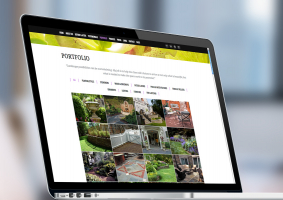Top 10 Best Photography Portfolio Websites
If you're interested in creating an online portfolio for the first time or already have one but are looking for a better alternative, you're in luck since ... read more...Toplist shares the 10 top photography portfolio websites in this post.
-
As one of the most widely used website builders, Squarespace is a favorite among photographers for many excellent reasons. Multiple editable templates are available, and a short poll will help you narrow down your choices.
Blog pages are another wonderful way to get people to your site, and Squarespace allows you to do so with ease. Site visitors, their actions, and more may all be tracked with the analytics tools built into Squarespace websites.
With Squarespace, you can open a virtual shop to peddle your wares to the world. Email marketing and social media posting count as further options for spreading the word. Squarespace's only real drawback is that it doesn't allow for client-proofing pages, so if it's a must-have for you, you may want to look elsewhere.
You can sign up for a free trial for 14 days and then choose from four different pricing tiers (beginning at $16). Visit the Showcase to see examples of sites made by actual Squarespace customers.Website: https://www.squarespace.com/
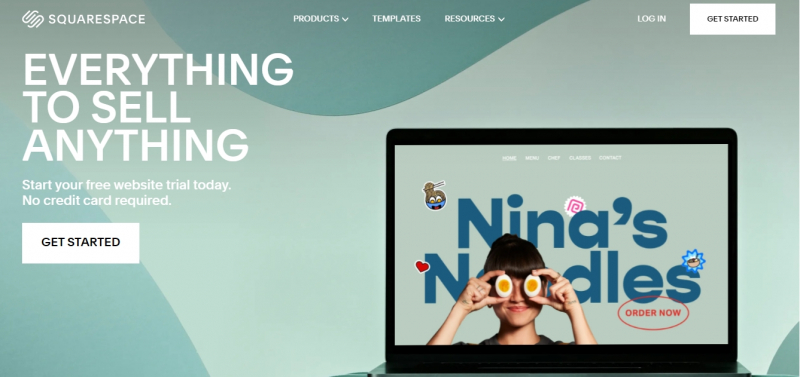
Screenshot via https://www.squarespace.com/ 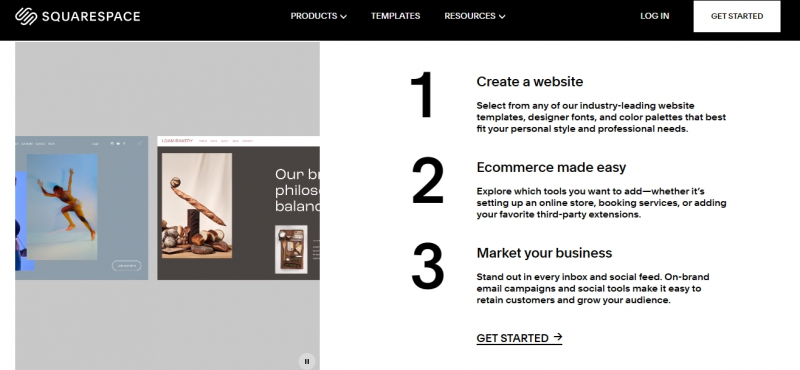
Screenshot via https://www.squarespace.com/ -
Adobe Portfolio is a feature of any Photoshop or Lightroom subscription, so you already have access to it. It's "free," therefore there's no reason not to use it to launch your online business.
Portfolio permits the creation of as many as five websites with no page limits. You can sync your galleries with Lightroom or Behance and streamline your workflow by connecting your sites to these popular platforms. The entire site, or just specific sections, can be made private using a password.
Purchase your own domain name (and point it, for free, to your Adobe Portfolio site) to use as your professional online identity. MailChimp also allows you to set up a contact form for potential customers to use. Your portfolio website does not support any kind of online store. What you see is what you get with Adobe Portfolio, as there are no paid add-ons available.
The Adobe Portfolio Example page showcases the work of other Adobe Portfolio users. Adobe memberships are available to anyone who does not already have one for a starting fee of $9.99.Website: https://portfolio.adobe.com/
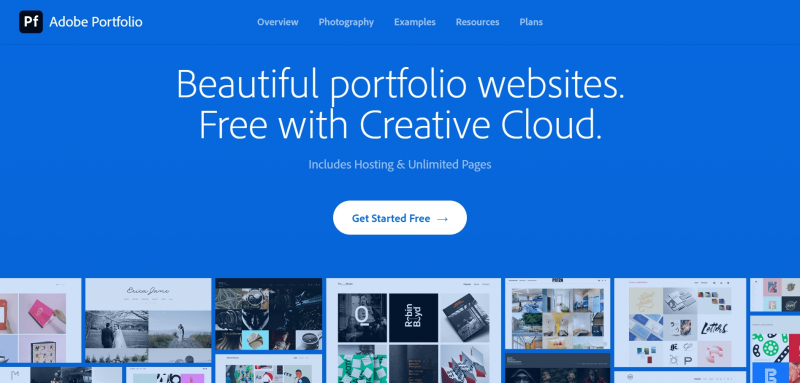
Screenshot via https://portfolio.adobe.com/ 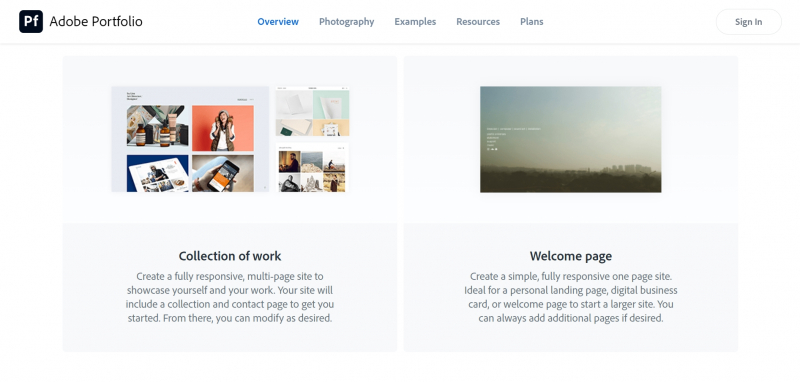
Screenshot via https://portfolio.adobe.com/ -
Behance is an additional Adobe service for online portfolios. It's not perfect for professionals because it's a cross between a social network profile and a portfolio site, but it's free, so you can use it to show off your work even if you don't have an Adobe account. You may also check out job postings and submit your application on Behance. After reviewing your resume, the recruiter might check out your online portfolio.
Behance's most valuable feature is the thousands of artists who use it and with whom you may collaborate. Among the many features available is the ability to send and receive messages and view live broadcasts.Website:https://www.behance.net/
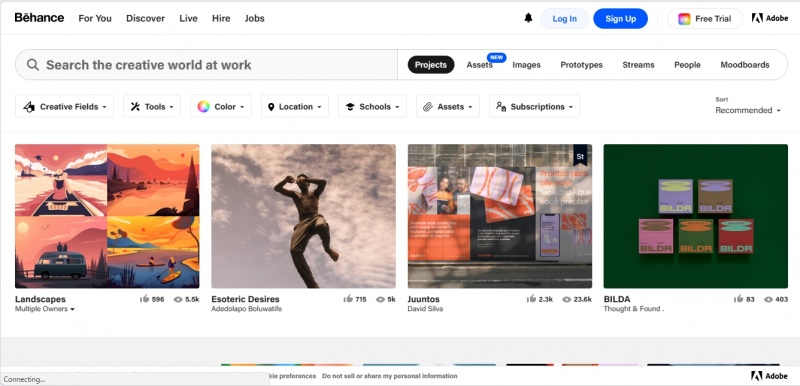
Screenshot via https://www.behance.net/ 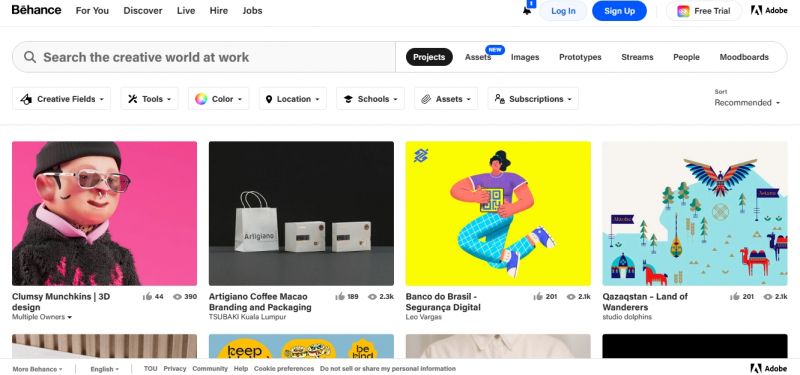
Screenshot via https://www.behance.net/ -
Although SmugMug isn't the most visually arresting option, it serves a useful purpose and is used by many serious photographers.
Unlimited high-resolution storage, multiple-image management, in-app editing tools, a custom domain name, and an online store are just some of the features that come standard with the website builder. The site has partnerships with labs that can fulfill print and product orders placed by customers. Client-proofing galleries can also be used to sell digital downloads.
With a SmugMug subscription, you may save money on services like Adobe Creative Cloud, Photo Ephemeris, and more because of the company's relationships. Here is a complete rundown of all the deals that are currently available.
SmugMug has four pricing tiers, with the cheapest starting at $11. Select the features that are absolute must-haves for you, and SmugMug will recommend a plan that fits your needs.Website: https://www.smugmug.com
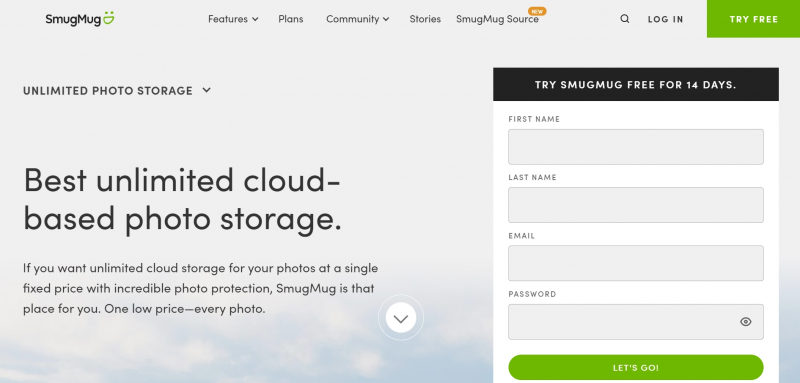
Screenshot via https://www.smugmug.com 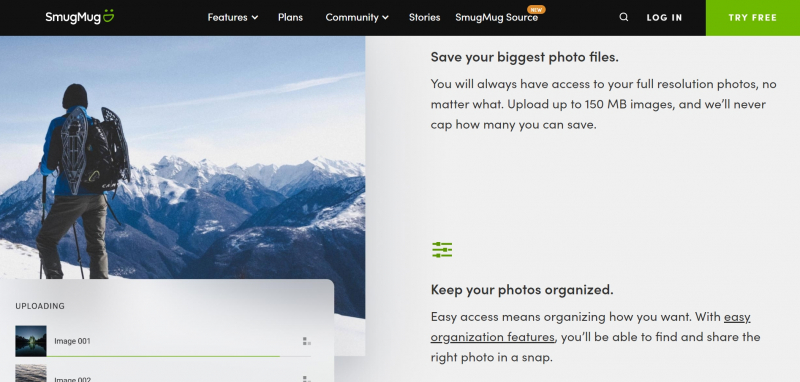
Screenshot via https://www.smugmug.com -
PhotoShelter was designed with photographers in mind, so in addition to allowing you to create a portfolio website, it can also let you store and deliver your images, as well as sell or license them.
PhotoShelter provides users with nine different website layouts from which to choose, a built-in shopping cart, and a number of partner laboratories with which to sell their photographs via print-on-demand and custom back printing.
Discount vouchers, sales bundles, and codes can all help boost revenue. In addition, you may make private galleries, limit clients' access to them, and send them high-resolution images with ease.
PhotoShelter has three different plans available, each with its own set of features and amount of storage space. By the way, have a look at PhotoShelter for Brands if you're a photographer for a corporation.Website: https://www.photoshelter.com/

Screenshot via https://www.photoshelter.com/ 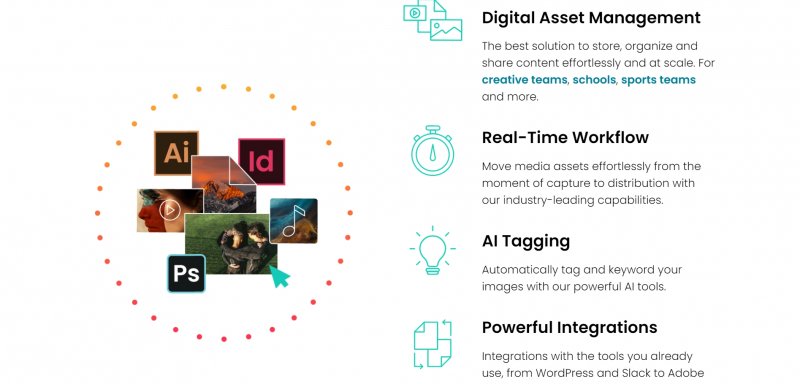
Screenshot via https://www.photoshelter.com/ -
Another all-in-one solution, Zenfolio is great for creating a photography portfolio website. Pick a premade design as a starting point, then play around with the settings to make it your own.
You may create public and private galleries to show off your work and get feedback from clients. It's simple, can be automated, and provides many layers of protection for your source files to watermark your photographs.
You can use the integrated e-commerce platform to sell prints, downloads, photo gifts, and custom bundles. Customers can purchase select items with a single click in the Quick Shop. Even email marketing campaigns can be made.
There are three different Zenfolio subscription plans, each with its own set of benefits and limitations.Website: https://zenfolio.com/intl/
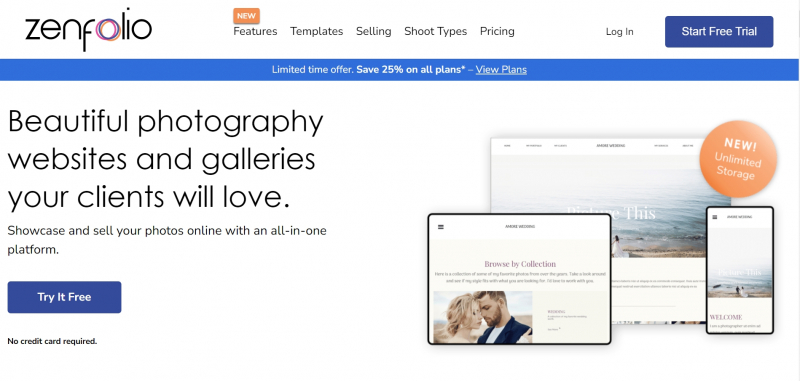
Screenshot via https://zenfolio.com/intl/ 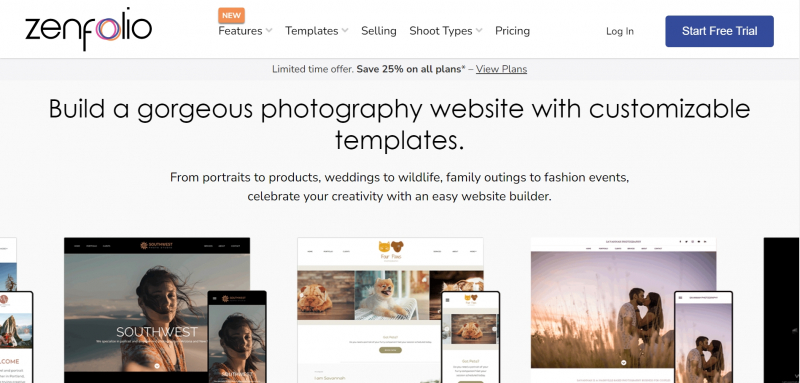
Screenshot via https://zenfolio.com/intl/ -
While Wix is not tailored to photographers (or other visual artists), it is simple to use and provides a fully functional free version. Keep in mind that while all website-building options are accessible in the free edition, display advertising is not included, and a custom domain cannot be linked.
While I agree that the free edition is a fantastic way to get started with Wix, I strongly advise upgrading as soon as possible. Ad removal packages start at $13 per month, and there are two more price points available.
Wix provides a ton of templates, including some that are tailored specifically to photography; all of them are editable, and many of them are quite attractive. If you're having trouble deciding on a template for your website, Wix has an artificial intelligence (AI) tool that will ask you a series of questions to narrow down your options.
And you can do everything on Wix, from displaying your portfolio to selling prints and scheduling photoshoots. To make your website stand out from the crowd, you can even engage a professional designer. Additionally, the Wix app allows you to maintain your portfolio website from your mobile device.Website: https://www.wix.com/

Screenshot via https://www.wix.com/ 
Screenshot via https://www.wix.com/ -
With Format, you can design a website to showcase your photography and manage your business all in one place.
You can select a design from among many available templates, or you can specify your field to see only those that are applicable to you. You can also contract with a format designer to create a personalized portfolio site.
Create branded zip files with up to 10 GB of images and use the format to share them with clients or showcase your work with customized galleries. The customer's overview section is where you may save vital information about your customer, including contact details, project notes, contracts, and more. Labels are another useful way to categorize your client list.
If you want to generate money without lifting a finger, you can use Format's Marketplace to sell prints. The administration features allow for simple file management, and you may save all your photographs in high definition.
Format's pricing plans range from $7 to $20, making it affordable for a wide variety of situations.Website: https://www.format.com/
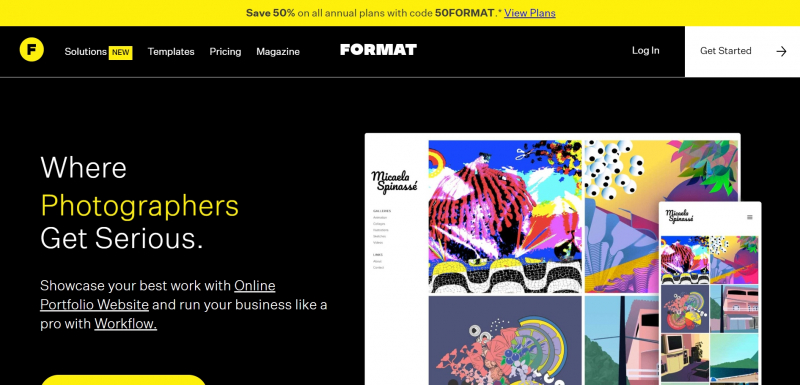
Screenshot via https://www.format.com/ 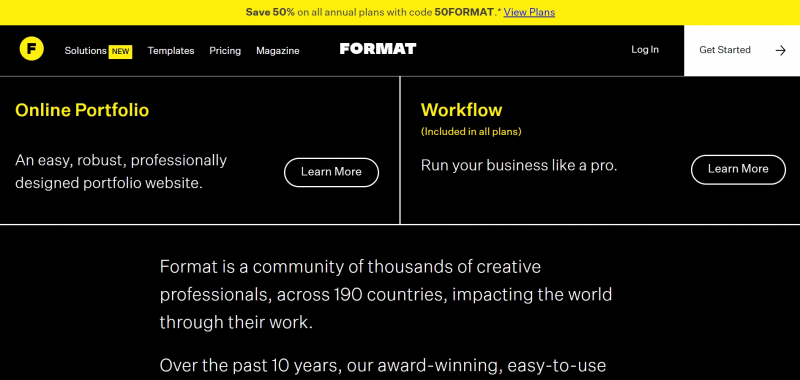
Screenshot via https://www.format.com/ -
While Carbonmade isn't the most widely used website creator, it's more than capable of producing professional-quality photographic portfolios for both amateurs and experts. To get started, pick a (completely editable) theme made for artists and designers. If too many options make your head spin, just remove those that have nothing to do with photography.
Remember that the suggested template is just a starting point; you can make changes utilising blocks, such as a Before/After block that is helpful for picture retouchers, with Carbonmade's AI tool.
Photos, videos, GIFs, and PDFs can all be uploaded without limit on Carbonmade. There are a variety of gallery layouts available to you, and you can even make private galleries for your customers. Carbonmade focuses solely on showing your work and does an excellent (and aesthetically pleasing) job doing it, unlike the other portfolio websites on this list.
Check out the Talent Pool search bar and the Example page to see some examples of websites built using Carbonmade in action. There are three subscription tiers to choose from, with prices starting at $9 per month.Website: https://carbonmade.com/
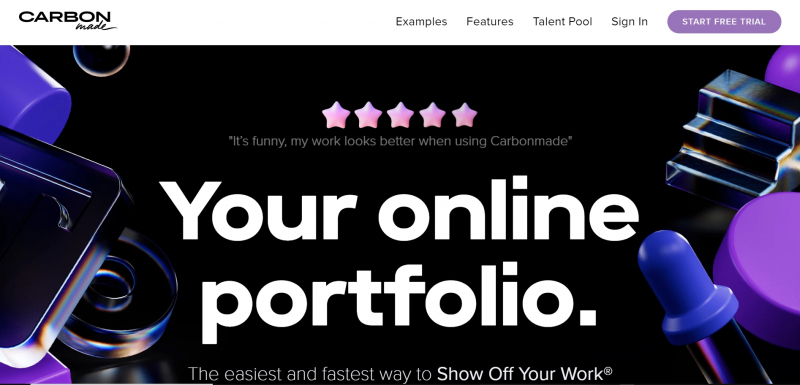
Screenshot via https://carbonmade.com/ 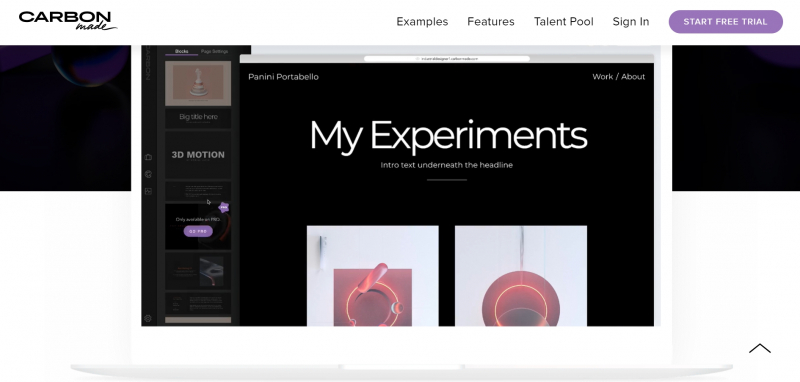
Screenshot via https://carbonmade.com/ -
WordPress provides two distinct systems, each with its own functionality. WordPress.org is for those with technical expertise, while WordPress.com is for those without such expertise but who still want a portfolio site that works similarly to the others on this list.
Creating a website on WordPress.com is free, but you'll have to make do with a subdomain and 3 GB of storage space. If you need more storage space, a custom domain name, or any of the other premium features, you can switch to one of the four paid plans.
If you decide to upgrade to a subscription plan, you'll have access to premium themes, some of the most popular of which are Flothemes, Novo, and ProPhoto.
Check out WordPress.org if you're looking for a platform on which to build a fully personalised online portfolio. You will be responsible for all aspects of the website's creation and maintenance, from selecting a domain name and hosting provider to coding the site's core functionality and adding third-party plugins. While there is no initial investment required, ongoing fees quickly pile up, making this option impractical for most photographers.Website: https://wordpress.com/
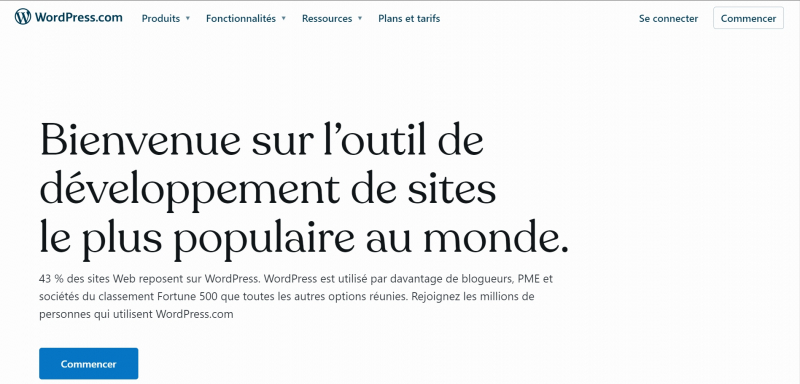
Screenshot via https://wordpress.com/ 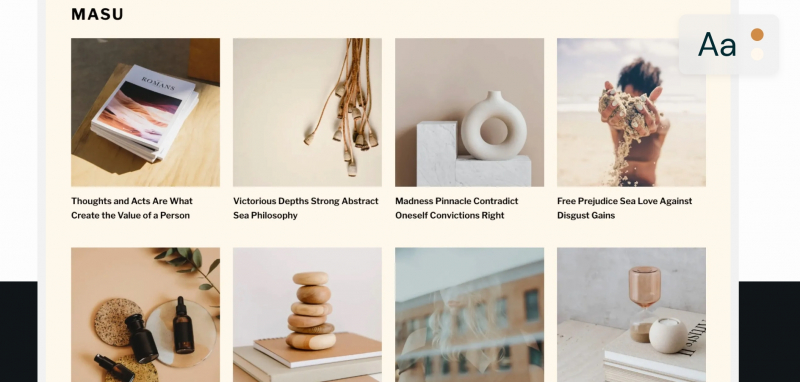
Screenshot via https://wordpress.com/














